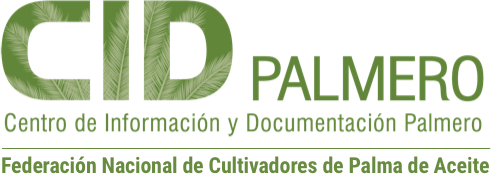De la política pública a la política gremial: el Fondo de Estabilización de Precios de la Palma de Aceite en Colombia
Publicación:
Revista Palmas; Vol. 39 Núm. 1 (2018); 91-119
0121-2923
Revista Palmas; Vol. 39 Núm. 1 (2018); 91-119
0121-2923
Abstract
This paper examines the design and implementation process of the Price Stabilization Fund for Kernel, Palm Oil and their Fractions (FEP, in Spanish), as a policy instrument according to the role of the State in the economy. In this sense, this document seeks to contrast the positive and normative theory of economic analysis with the resulting public policies, using the case study as unit of analysis. In order to improve the position of the producer by reducing the market power of the industry that was generated by having an oligopsonic structure,the FEP design had the purpose of stabilizing prices between the domestic and export markets by distributing price differentials among producers. Although the implementation process encountered several difficulties, mainly due to the complexity of understanding the mechanism in the operation stage, the work done by the Colombian National Federation of Oil Palm Growers (Fedepalma) previous to the design and enactment of the FEP, facilitated communication between producers, Fedepalma and the industry, fostering confidence inthe management of the sector. According to that, the analysis carried out in this work supports the idea that the oil palm sector designed an innovative scheme, without a close referent for that time, which has allowed the development of its activity and favored the growth of the sector. Este trabajo examina el proceso de diseño e implementación del Fondo de Estabilización de Precios para el Palmiste, el Aceite de Palma y sus Fracciones (FEP, Palmero), como instrumento de política en función del rol del Estado en la economía. En ese sentido, se busca contrastar la teoría positiva y normativa del análisis económico con las políticas públicas resultantes, utilizando como unidad de análisis el caso de estudio. Con el fin de mejorar la posición del productor, reduciendo el poder de mercado de la industria que se generaba por tener una estructura oligopsónica, el diseño del FEP tenía la finalidad de estabilizar los precios entre mercados (interno y de exportación), distribuyendo los diferenciales de precio entre los productores. Aunque el proceso de implementación presentó varias dificultades, principalmente por la complejidad de entender el mecanismo en operación, la labor gremial previo al diseño y entrada en vigencia del FEP facilitó la comunicación productores-gremio-industria, fomentando poco a poco una confianza en la gestión del sector. De acuerdo a eso, el análisis realizado en el presente trabajo respalda la idea de que el sector palmero diseñó un esquema –que para su época fue innovador, en la medida en que no encontró un referente cercano– que le ha permitido desarrollar su actividad en un entorno en el que se ha propiciado su crecimiento.
This paper examines the design and implementation process of the Price Stabilization Fund for Kernel, Palm Oil and their Fractions (FEP, in Spanish), as a policy instrument according to the role of the State in the economy. In this sense, this document seeks to contrast the positive and normative theory of economic analysis with the resulting public policies, using the case study as unit of analysis. In order to improve the position of the producer by reducing the market power of the industry that was generated by having an oligopsonic structure,the FEP design had the purpose of stabilizing prices between the domestic and export markets by distributing price differentials among producers. Although the implementation process encountered several difficulties, mainly due to the complexity of understanding the mechanism in the operation stage, the work done by the Colombian National Federation of Oil Palm Growers (Fedepalma) previous to the design and enactment of the FEP, facilitated communication between producers, Fedepalma and the industry, fostering confidence inthe management of the sector. According to that, the analysis carried out in this work supports the idea that the oil palm sector designed an innovative scheme, without a close referent for that time, which has allowed the development of its activity and favored the growth of the sector.



